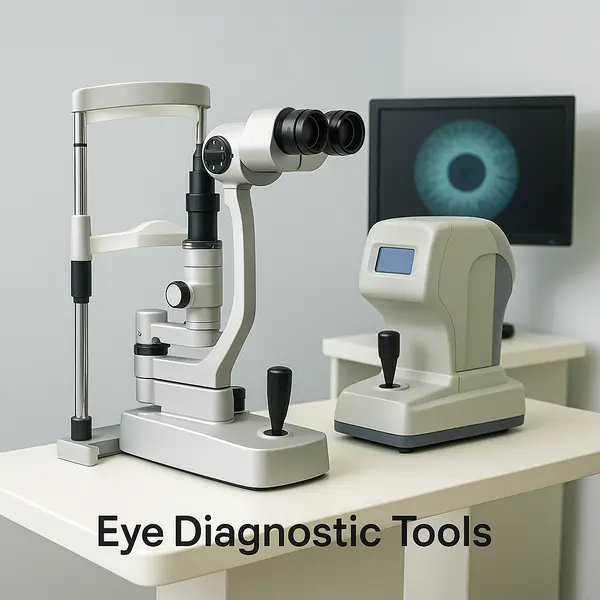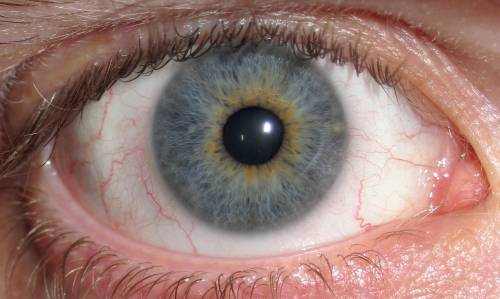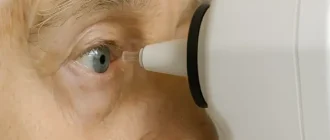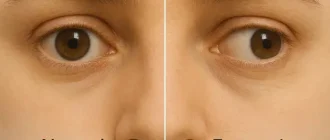Headaches and blurred vision may seem like a cruel combo meal you never ordered. But the truth is, the human body is wired in ways that make these two symptoms appear together more often than people think. A headache can be triggered by anything from dehydration to neurological conditions, and when paired with blurry vision, it often points to issues that involve blood flow, pressure changes, or nerve-related dysfunctions.
For example, a person experiencing migraine with aura may notice flashing lights, zigzag patterns, or blurred vision, followed by intense head pain. According to the American Migraine Foundation, about 25–30% of migraine sufferers report visual disturbances before or during attacks.
Could It Be Something Serious?
Sometimes, headaches plus blurred vision are nothing more than temporary nuisances—like eyestrain from staring at screens for eight hours straight (yes, we’re all guilty of that). But in other cases, they can signal potentially dangerous conditions. Let’s take a closer look at the most important ones:
Hypertension Crisis
A hypertensive crisis occurs when blood pressure rises to dangerously high levels, often above 180/120 mmHg. The main symptom is a severe, pounding headache, often accompanied by blurred vision, chest pain, or shortness of breath. Additional signs may include confusion or even nosebleeds. This condition is considered a medical emergency—patients should seek immediate care, as untreated crises can lead to stroke, heart attack, or kidney failure ⧉.
Glaucoma
Glaucoma is an eye disease characterized by increased intraocular pressure that damages the optic nerve. The main symptom is gradual vision loss, often starting with blind spots in peripheral vision. In acute angle-closure glaucoma, a medical emergency, symptoms include sudden severe eye pain, nausea, halos around lights, and rapid vision loss. Because it often progresses silently, regular eye exams are critical for detection ⧉.
Brain Aneurysm
A brain aneurysm is a bulge in a blood vessel in the brain that may leak or rupture. The hallmark symptom of rupture is a sudden, “worst-ever” headache, frequently accompanied by blurred or double vision, nausea, stiff neck, or even loss of consciousness. Smaller, unruptured aneurysms may be asymptomatic until they grow. Any sudden, severe headache paired with vision changes should prompt an immediate emergency room visit ⧉.
Diabetic Retinopathy
Diabetic retinopathy is an eye complication of poorly controlled diabetes that damages the tiny blood vessels in the retina. Symptoms often include blurred or fluctuating vision, dark spots or strings (floaters), and difficulty seeing at night. Headaches may appear as a secondary symptom due to visual strain. While the disease develops gradually, it can lead to blindness if untreated. Regular retinal exams are essential for anyone with diabetes, and urgent care is needed if sudden vision changes occur ⧉.
Reyus Mammadli, a medical consultant, emphasizes that the severity of these conditions varies—hypertensive crises and brain aneurysms demand immediate attention, while glaucoma and diabetic retinopathy often progress silently but still require consistent, proactive medical care to prevent permanent vision loss.
How Do Doctors Diagnose the Cause?

Diagnosis isn’t a “one-size-fits-all” situation. Doctors use several methods, often layering different approaches for accuracy:
| Diagnostic Method | How It Works | Accuracy (1–10) | Average Cost (USD) |
|---|---|---|---|
| Ophthalmic exam | Eye doctor checks for optic nerve issues, retinal damage | 7 | $150–$250 |
| MRI or CT scan | Imaging of brain structures to detect tumors, aneurysms, lesions | 9 | $800–$2,000 |
| Blood pressure monitoring | Detects hypertension, which can cause both symptoms | 8 | $20–$100 |
| Visual field test | Detects blind spots, glaucoma, or optic nerve problems | 7 | $50–$200 |
| Blood sugar test (A1C) | Identifies diabetes-related causes | 8 | $50–$100 |
What each test looks like for patients:
- Ophthalmic exam: The patient sits in front of specialized equipment while the doctor shines lights into the eyes and may use dilating drops to look at the retina and optic nerve.
- MRI or CT scan: The patient lies still on a sliding table that moves into a scanner. Contrast dye may be injected into a vein for clearer imaging.
- Blood pressure monitoring: A cuff is placed on the arm, inflating and deflating to measure pressure within blood vessels. Some cases require 24-hour portable monitoring.
- Visual field test: The patient rests their head on a chin support and presses a button whenever they see flashing lights in different parts of their vision.
- Blood sugar test (A1C): A small blood sample is taken from a finger prick or vein to measure average blood glucose over the past 2–3 months.
Many clinics in the U.S. now use advanced digital retinal imaging (such as Optos widefield scans), which can catch subtle retinal changes much earlier than traditional methods. This tech upgrade has been a game changer in places like Boston and Chicago, where ophthalmology centers invest heavily in innovation.
What Treatments Are Available?
Treatment depends entirely on the underlying cause. Each condition has unique approaches, varying in intensity, cost, and whether the therapy is curative or focused on long-term management.
Migraines
Migraines are chronic neurological conditions rather than one-off episodes. Treatment often requires both acute management and prevention. Triptans (such as sumatriptan and rizatriptan) are usually prescribed to stop attacks, while newer CGRP inhibitors (like Aimovig or Emgality) aim to reduce frequency. Patients may undergo infusion therapy in a clinic if oral medications fail. Migraines rarely have a “cure,” but treatments can dramatically reduce symptoms and improve life quality.
Severity: Moderate to severe, often recurrent.
Cost: $100–$600 per month, depending on medications and insurance coverage.
Hypertension-Related Headaches
When headaches and blurred vision are tied to hypertension, treatment is focused on long-term management. Patients may be prescribed beta-blockers, ACE inhibitors, or diuretics. Doctors also recommend strict dietary modifications (such as reduced salt intake) and regular exercise. In crisis situations, IV antihypertensives are given in hospitals to rapidly lower blood pressure. While blood pressure can usually be controlled, this condition requires lifelong treatment rather than a permanent cure.
Severity: Can be life-threatening if untreated.
Cost: Medications $10–$100 monthly; ER treatment for a hypertensive crisis can exceed $5,000.
Glaucoma
Glaucoma is a progressive eye disease that causes optic nerve damage. Initial treatment often includes prescription eye drops like latanoprost or timolol to reduce eye pressure. If medications fail, laser procedures (such as trabeculoplasty) or surgical interventions (trabeculectomy or shunt implantation) may be performed. Glaucoma is not curable; the goal is to prevent further vision loss. Early detection and compliance with therapy are critical.
Severity: Chronic and vision-threatening.
Cost: $300–$1,000 yearly for medications; surgery can range from $3,000 to $6,000.
Diabetic Retinopathy
For patients with diabetes, blurry vision and headaches can stem from retinal vessel damage. Treatment begins with strict blood sugar control, usually managed with insulin or oral hypoglycemics. Ophthalmologists may perform laser photocoagulation to seal leaking blood vessels or injections of anti-VEGF drugs (like Eylea or Lucentis) directly into the eye. Advanced cases may require vitrectomy surgery. This condition is not entirely curable, but progression can be slowed significantly.
Severity: High risk of permanent vision loss if untreated.
Cost: Injections $1,500–$2,000 each (often multiple needed); laser therapy $1,000–$2,500.
Interestingly, telemedicine has become increasingly important. In 2023, several major U.S. hospital networks reported a 35% increase in virtual visits for headaches with vision problems, showing how much patients value fast access to expert guidance ⧉.
Real-World Cases From the U.S.
- Case 1: A 42-year-old man from Dallas, Texas: He arrived in the ER with sudden blurred vision and an explosive headache. His blood pressure measured 210/120 mmHg. Immediate treatment with IV antihypertensives stabilized him and prevented a stroke.
- Case 2: A 28-year-old woman from Seattle, Washington: She reported recurrent headaches and blurred vision before exams. MRI revealed a benign pituitary adenoma pressing on her optic chiasm. Surgery restored her vision and resolved the headaches.
- Case 3: A 65-year-old woman from Miami, Florida: She had poorly controlled diabetes and was losing clarity in her vision. Retinal scans showed advanced diabetic retinopathy. With laser treatment and strict glucose control, her condition improved significantly.
These cases highlight how the same set of symptoms can have vastly different outcomes depending on the underlying cause.
Can Lifestyle Adjustments Help?
Absolutely. While serious cases need medical intervention, small shifts in daily habits often play a big role in prevention and management:
- Screen breaks: Following the 20-20-20 rule (every 20 minutes, look 20 feet away for 20 seconds) reduces eye strain.
- Hydration: Dehydration is a sneaky headache trigger. Keeping a water bottle handy is a simple fix.
- Sleep hygiene: Poor sleep can worsen both headaches and visual strain.
- Diet: Diets rich in leafy greens, omega-3 fatty acids, and antioxidants protect both brain and eye health ⧉.
As Reyus Mammadli advises, “Small, consistent changes often pay off more than dramatic one-time fixes.”
Editorial Advice
When headaches and blurred vision strike, it’s tempting to shrug them off as “just another migraine” or “too much screen time.” But medical experts caution that these symptoms should never be ignored, especially if they appear suddenly or with unusual intensity. Reyus Mammadli, medical consultant, stresses the importance of early diagnostic evaluation. Advanced imaging, regular eye exams, and routine blood pressure checks can prevent serious complications.
Readers are encouraged to treat their body like a high-performance vehicle: regular checkups, proper fuel (nutrition), and timely maintenance matter. If you experience these symptoms, don’t just power through with coffee and over-the-counter painkillers—book that appointment. Your eyes and brain will thank you later.





